|
TECHNIQUE
AND METHOD IN THE GREEK TRADITION
The
origin of Byzantine Iconography is Greek by heritage and dates back to the 3rd
century and earlier. Though iconography has grown to include many
cultural forms (such as Russian, Serbian, Bulgarian, Armenian, etc.), the
Hagia Theodora School teaches the ancient and most original Byzantine
Iconography techniques of the Cretan, Macedonian, Constantinopolitan and
Cypriot historical regions of Greece.
These
styles of Iconography are virtuosic in paint formulation and application,
often featuring 100 or more fine layers of pain-staking applied, hand-ground
egg tempera paint on the skin tones of its subjects. This "modeling"
of paint layers causes the subjects to "glow" as refracted light
travels through the many layers. The vestments and landscapes of these icons
can also feature 50 layers or more of paint. Together with a unique, slow
process of 24KT gold and varnish application, these icons are not only truly
illuminated but prove to last the tests of time... hundreds, and even
thousands of years!
|
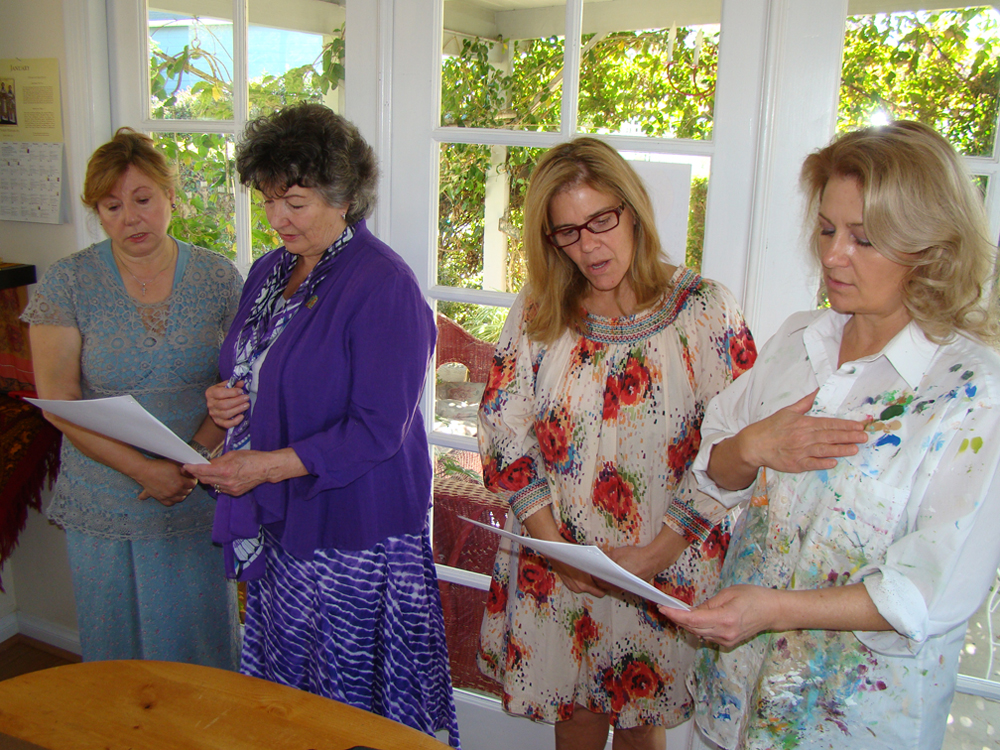
|
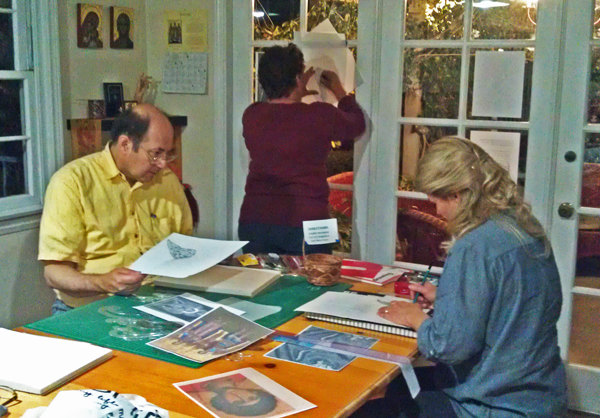
|
|
Class
always starts with prayer...
|
Students
draw and trace canonical prototypes from ancient iconography.
|
|

Father
Anthony Savas Blessing the Icons. In 2015 the School became
officially endorsed my His Eminence, Metropolitan Gerasimos and
the Greek Orthodox Archdiocese of San Francisco.
|
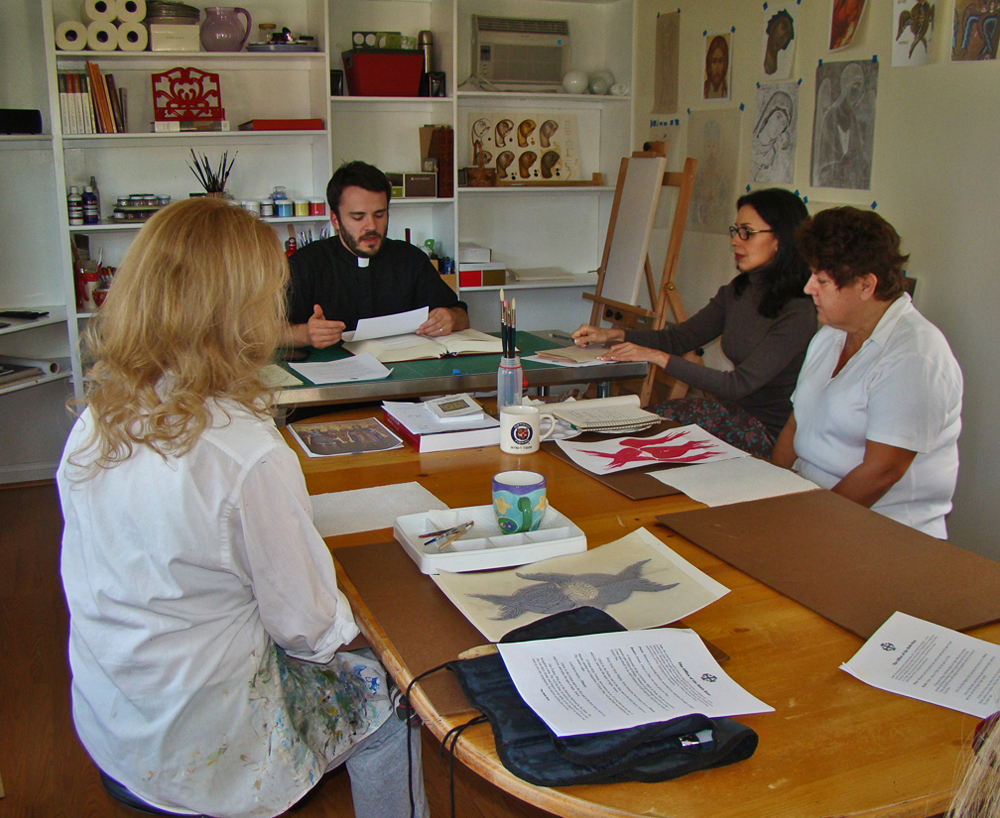
Father
Michael State leading a theological lecture.
|
|

Students
are taught to write Holy Icons sitting or standing using a mahl
stick
|
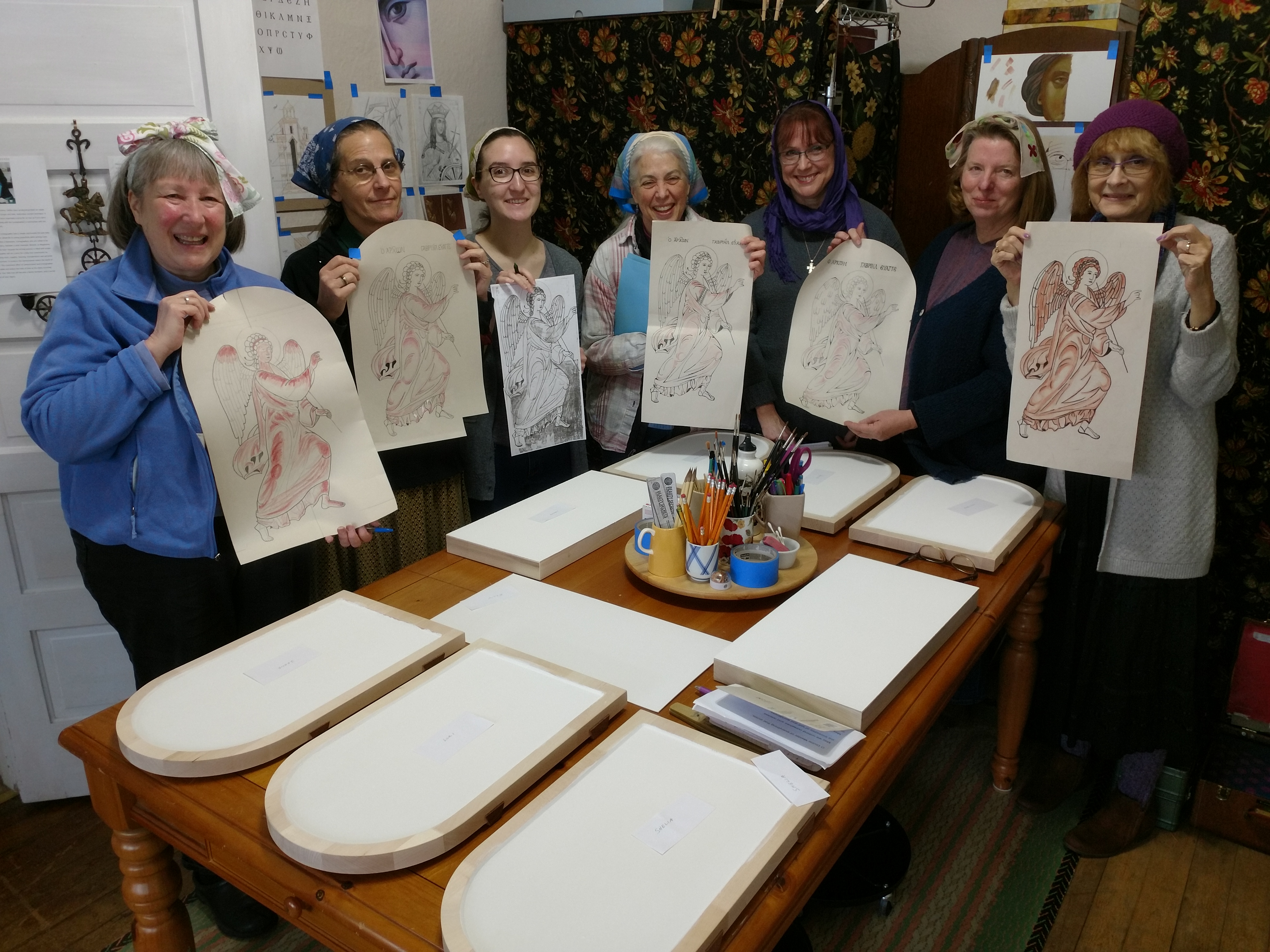
Students
create an anthivolon - a shaded sketch that will be used
for transferring the Icon prototype.
|
|

Students
learn to scribe in ancient Greek using a paint brush.
|

Seminarians,
clergy and laity with-a-calling learn the canon of Iconography.
|
|

Good
posture is encouraged to increase artists' stamina.
|
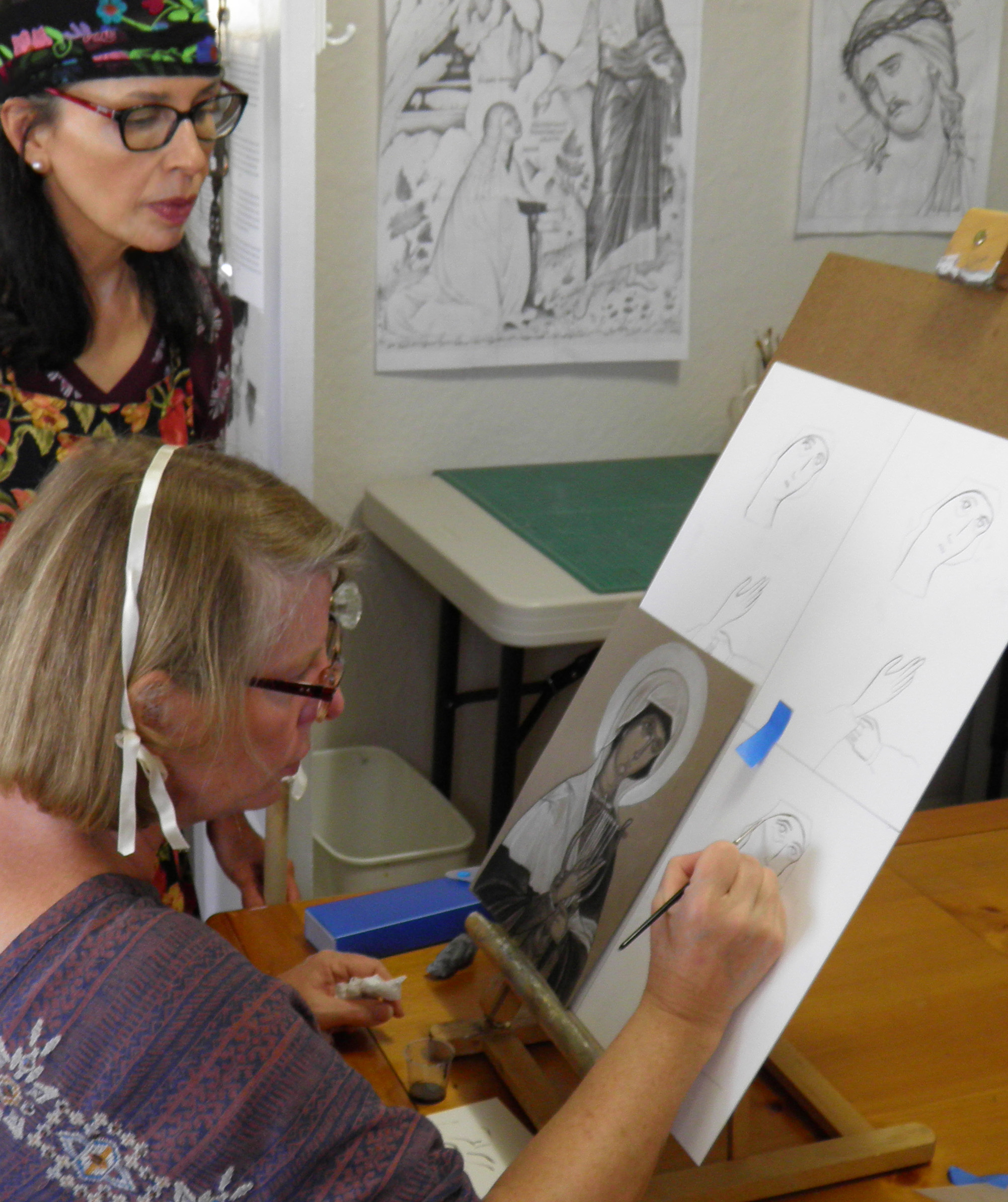
Students
often repeat their work several times to perfect their brush
control.
Practice
makes perfect!
|
|

The
School exhibits the students' newly completed Holy Icons at
galleries and other events. This is a special Holy Iconography
exhibit and performance collaboration with acclaimed Liturgical
Chant Ensemble, Capella Romana
|
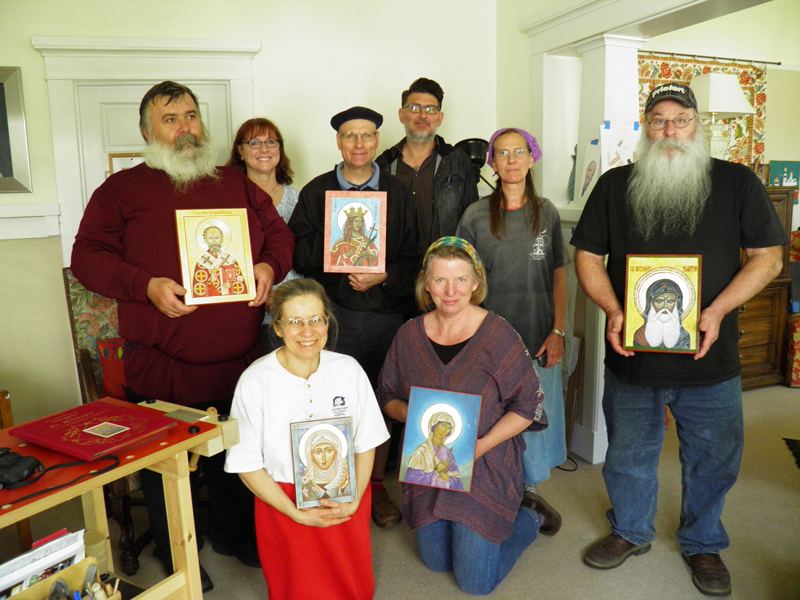
The
Apprentice Program is a 4-year Master Study program open to
Clergy, Seminarians, Monastics and
other devout laity.
|
|
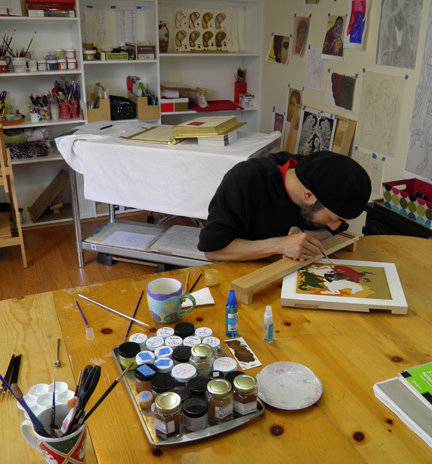
Students
advance from working flat on a tabletop to upright at an easel.
|
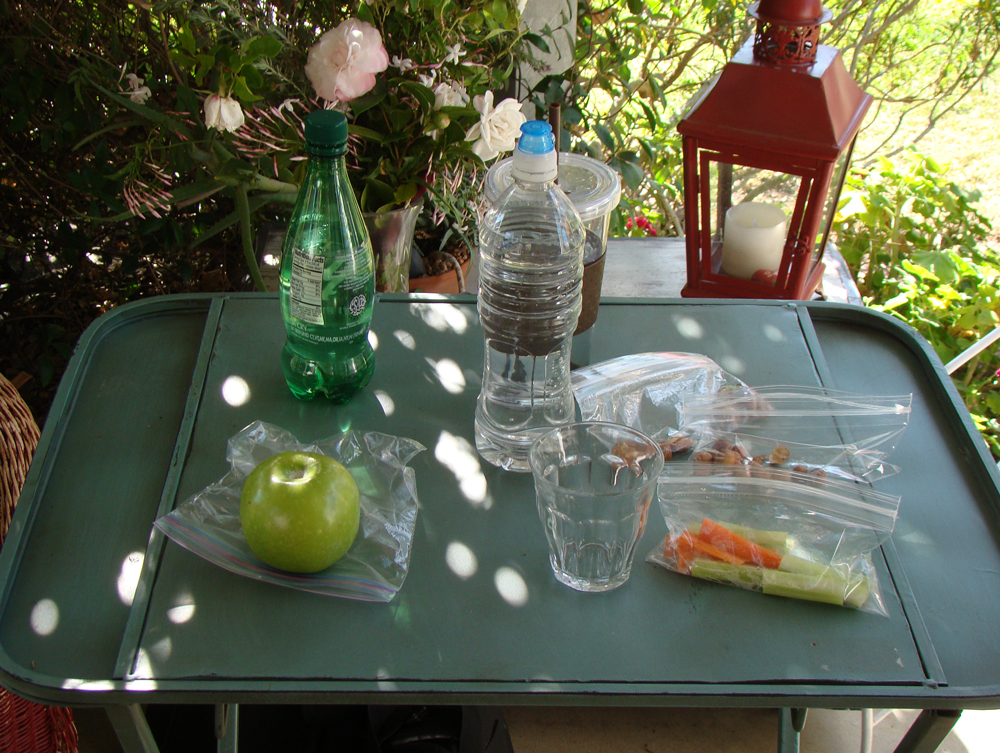
Fasting
is encouraged during class and whenever the iconography student
practices. Rather than going without foods, fasting is
generally defined as eating fresh fruits/vegetables and drinking
only water or tea. Students are also encouraged to fast from media
devices and other distractions.
|
ICONOGRAPHY
IS MORE THAN AN ART, IT IS CONSIDERED A LIFESTYLE
The
writing of icons encompasses more than the ability to paint. We
use the descriptor "writing" as it most closely
illustrates the iconographer's task as being the
"scribe" (in image form) of the canons and traditions of
the Orthodox Church. To carry out this reverent and
honorable task, an iconographer must conduct his or her lifestyle
in a pious manner incorporating prayer and fasting.
The
Hagia Theodora School not only incorporates teachings on the
theology and symbolism of Byzantine Iconography but also spiritual
askesis (noetic exercise and discipline) to fortify a
prayerful and attentive life. Lectures are delivered by our
instructor and frequent guest speakers.
A
new prototype designed by the School for the new St. Anne Melkite
Cathedral which
was presented
to
His Eminence, Cardinal Leonardo Sandri,
Prefect
of the Congregation for the Oriental Churches and Grand
Chancellor
of the Pontifical Oriental Institute, Rome (at the
gates of Vatican City).
|